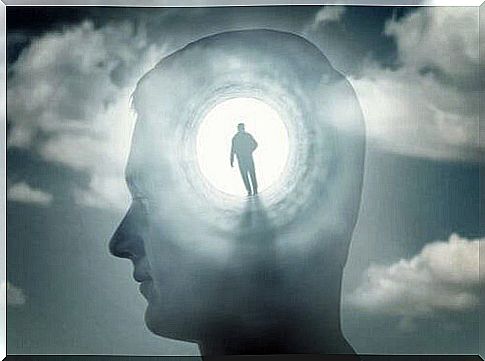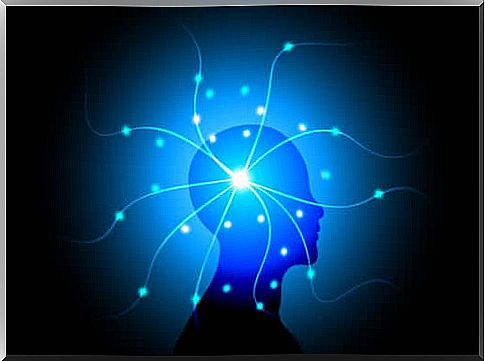Psychopathology Of Consciousness

Consciousness has been an object of study in the philosophical field since ancient times; from this reflection the psychopathology of conscience was born. In reality, after 2,500 years, it seems that a concordant definition of this construct has not yet been reached.
Descartes spoke of spirit and his efforts were aimed at understanding what it meant for a spirit to be able to say something about itself; Block (1995) spoke of two types of consciousness and Chalmers (1998) speculated that it would take another century or two to settle the issue.
Currently we talk about psychological conscience and we try to understand if there are neural correlations with conscious states (Pérez, 2007). However, the guidelines do not seem to agree on the object of study: should we focus on the correlates of states of consciousness or on the content of consciousness?

Psychopathological disorders of consciousness
Although the definition of consciousness is not unique, we know that it can be affected by specific disorders. Bleuler (1857-1939) defined consciousness as the knowledge of self-awareness.
A person with impaired consciousness is unable to respond adequately and comprehensively to environmental stresses and internal stimuli. Around this definition, the psychopathology of consciousness is organized.
Gastó and Penades (2011) and Santos, Hernángomez, Travillo (2018) speak of four characteristics of consciousness. These are relevant factors in the disorders that we are going to see.
- Subjectivity or privacy of the mind.
- Existence of a single consciousness for each individual.
- Every action is directed to an end.
- Self-awareness: ability to know oneself and recognize oneself as such.
Disturbances of consciousness are divided according to the aspect affected by the alteration.
Deficit Disorders of Consciousness: Lost in a Dream
The psychopathology of consciousness includes impaired behavioral disorders. In some cases the subject may have difficulty in “waking up”, orienting himself or responding to sensory stimuli, as if he were lost in time or in hibernation. There are three types of impaired consciousness:
- Lethargy, drowsiness, drowsiness : inability to maintain attention and alertness despite efforts. Lethargy is not a subjective feeling of drowsiness linked to a bad rest, it is an alteration of consciousness with almost no physical or verbal reactions.
- Obnubilation : it is a state characterized by a deeper distractibility and absence of stimuli. The subject experiences confusion or irritation when trying to bring him out of that state. There is an alteration of all psychic functions, as well as distortions in perception (auditory, visual).
- Amazement : It can be seen in disorders such as catatonic schizophrenia. The patient abandons voluntary movements altogether; the language is devoid of coherence and barely comprehensible.
The complete absence of consciousness occurs instead in coma, a condition in which reflexes, such as that of the pupil, disappear, and the electroencephalogram remains flat for thirty minutes. It is at that moment that we can say that there is no more conscience in the person.
Psychopathology of consciousness: productive disturbances of consciousness – hallucinations
Some altered states lead to thinking, rather than to an absence of consciousness, to a departure from the plane of reality. The picture includes hallucinations and delusions.
Oneirism, or oneiric delirium, understood as a confusion between the real and the imaginary, appears in all productive disturbances of consciousness. In this confusional state, the subject alternates dream states with moments of lucidity. Oneirism manifests itself with states such as:
- Asthenic-apathetic stage : usually present in elderly people, precedes toxic-confusional states. It can appear in subjects prone to suffer from delirium and is characterized by affective lability, irritability, fatigue and apathy. There are also alterations in psychic functions such as memory or attention.
- Confusional state : precedes the acute confusional state or delirium. Symptoms such as loss of coherence, memory distortion, incomprehensible language and disinhibition are recognized.
- Delirium : it is an acute disorder that produces a general alteration of the mental state. It is characterized by marked alterations in attention, perception, thinking, short and long term memory, psychomotor activity and sleep-wake cycle.
Delirium in hospitalized patients
Delirium occurs mainly in the elderly hospitalized, regardless of the reason that led them to be hospitalized. During the night the elderly patient can easily go into acute confusion.
Underlying this condition is the new environment and the anxiety caused by the disease. The problem is that hospital workers often don’t know what to do . Everything is due, in fact, to the different context in which the person finds himself.
Disorders of narrowing of the field of consciousness: split between thinking and behavior
They are characterized by a lack of continuity between perception and cognition; they manifest themselves with apparently normal behavior, but full of automatisms.
The main disturbance of the narrowing of the field of consciousness is the twilight state. Consciousness is totally clouded; the understanding of reality is distorted and partial.
The subject’s behavior seems consistent with the environment thanks to the presence of automatisms. The latter are involuntary movements – that is, they do not pass through consciousness – that the patient already knew before entering the twilight state.
This feature differentiates them, for example, from patients with schizophrenia, whose automatisms lead them to bizarre behavior.
In crepuscular states, impulses may also be present. They are impulsive behaviors without a cognitive basis – and this distinguishes them from the compulsions that can appear, for example, in OCD.
Crepuscular states appear suddenly and disappear as they appeared. Their duration usually ranges from a few hours to a few days; at the end the subject does not remember the episode experienced.

Psychopathology of consciousness: limited alterations
The psychopathology of consciousness also includes psychological or neurological disorders in which the main problem is not with the consciousness. This is the case of alterations such as depersonalization and derealization which usually appear in crises of anxiety, panic and neurotic pictures.
Depersonalization is defined as an alteration of ego consciousness in which the patient feels alien and distant from himself. The subject is a mere spectator of personal mental and physical processes. He describes his symptoms with expressions such as “it’s as if”, because the description is extremely difficult.
Depersonalization is also found in psychological and psychiatric pictures or in people without ailments as a result of physical, emotional fatigue, stress or sleep deprivation.
Derealization is a similar condition, with the difference that the alteration is about the experience and perception of the world and not of oneself.









